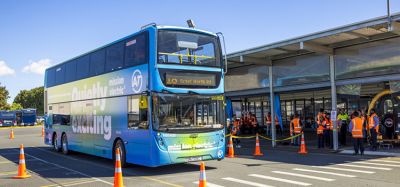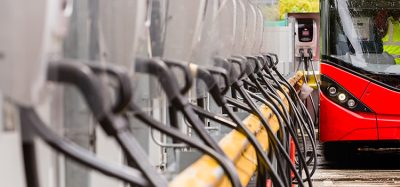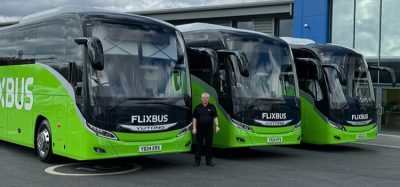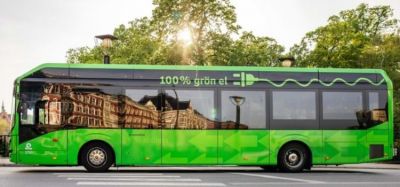The potential of modular electric vehicles for sustainable urban freight transport
- Like
- Digg
- Del
- Tumblr
- VKontakte
- Buffer
- Love This
- Odnoklassniki
- Meneame
- Blogger
- Amazon
- Yahoo Mail
- Gmail
- AOL
- Newsvine
- HackerNews
- Evernote
- MySpace
- Mail.ru
- Viadeo
- Line
- Comments
- Yummly
- SMS
- Viber
- Telegram
- Subscribe
- Skype
- Facebook Messenger
- Kakao
- LiveJournal
- Yammer
- Edgar
- Fintel
- Mix
- Instapaper
- Copy Link
Posted: 21 October 2022 | Albert Gragera - Bax & Company, Ignacio Magallón - Bax & Company, Lamberto Salvan - Alkè, Salvador Ruiz - IDIADA Applus+, Samuel Rouquette - Bax & Company, Victor Desmots - IDIADA Applus+ | No comments yet
Alkè, Applus+ IDIADA and Bax & Company – together with six other European partners – are co-developing the next generation of electric utility vehicles as part of the URBANIZED initiative. The modular approach will enable the production of more affordable, easily swappable, multi-purpose cargo bodies that are adaptable to fluctuating demands, subsequently reducing the upfront investments needed to acquire a fleet of electric commercial vehicles.
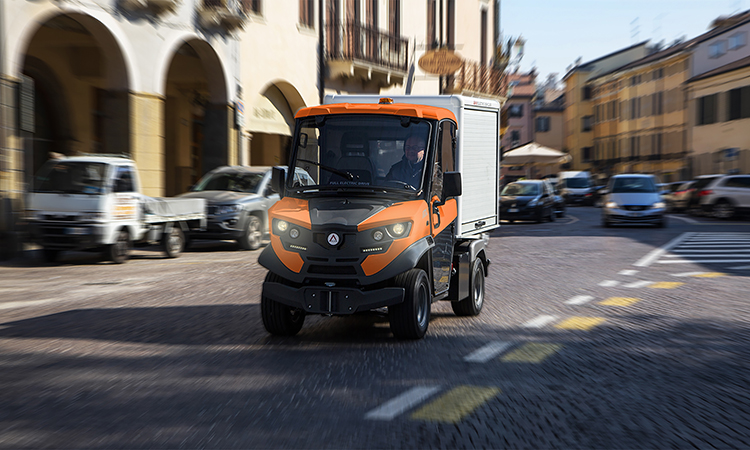

Credit: Alké
The European Union (EU) has set up an ambitious climate neutrality goal for emission-free logistics in city centres by 2030, in line with the 55 per cent target reduction of CO2 emissions by 2030 and 90 per cent by 2050. Electrifying urban freight transport (UFT) appears to be one of the key initiatives to help reach these targets, as it could reduce total road transport carbon emissions by at least three per cent. This became increasingly relevant with the rapid growth and the changing nature of deliveries and on-demand UFT services (same-day and fast deliveries) derived from changes in consumer preferences further spurred by the COVID-19 pandemic, imposing higher demand for urban space, increasing complexity and spurring the need for flexibility in UFT.
Furthermore, UFT is also associated with negative impacts in cities, so the public sector is trying to address it through different means. First, urban vehicle access regulations (UVARs) that gradually restrict polluting vehicles to access urban areas. Second, the new emission standards proposal1 settled through the ‘Fit for 55’ package is expected to further tighten the maximum levels of emissions allowed. And, just recently, the EU Parliament further pushed in such direction by voting in favour of a permanent ban on ICE cars and vans from 2035, aiming to achieve carbon neutrality by 2050. As a result, electric light commercial vehicles (e-LCVs) are being positioned as the best solution for UFT operators, being silent, emission-free and compliant with many forms of urban regulations.
A growing market
Original equipment manufacturers (OEMs) and urban logistics operators have undertaken structural changes that led to the development and adoption of smaller and cleaner e-LCVs especially suitable for operating in urban environments2. In the last few years, the share of new N1 purchases adopting e-LCVs in Europe (including the UK) has increased from 1.2 per cent in 2019 to 2.9 per cent in 2021. Yet, in terms of total N1 fleet e-LCV uptake, it still lingers below 0.6 per cent (about 166,000 vehicles). Figures are low and the transition is in its early stages, as the total number of N1 vehicles in Europe is currently around 5.5 million LCVs. Halfway through this transition, we can count the share of the fleet that uses alternative fuels, which, adding up e-LCVs, accounts for 11 per cent of the market. So, still, a relevant gap to bridge. E-LCV penetration rate shows a close to exponential increase, suggesting that its uptake has accelerated in recent years. Following the last 10 years’ trend, it would be safe to assume that e-LCVs could reach at least six per cent market share by 2030 under a very conservative approach3. More optimistic market research support claims of 40 per cent to 73 per cent market share by 2034.
URBANIZED: Modularity and flexibility for urban-ready, zero-emission commercial vehicles
URBANIZED has the vision to achieve future-proofed urban-readiness by integrating flexibility and adaptability through modularity in the design of e-LCVs”
January 2021 saw the launch of URBANIZED, a three-year EU-funded initiative to tap into this opportunity, developing the next generation of sustainable electric freight vehicles. With a total budget of €6.5 million, URBANIZED has the vision to achieve future-proofed urban-readiness by integrating flexibility and adaptability through modularity in the design of e-LCVs, making vehicles more adaptable to a larger range of on-demand UFT services, while reducing the number of necessary vehicles and substantially improving last-mile delivery operations’ efficiency. The new vehicle, based on the Alkè proprietary ATX electric N1 platform, will be able to optimally perform under different UFT use cases with modular cargo solutions, to be demonstrated in two specific pilots: last-mile parcel delivery operations (with BPost in Belgium); and HoReCa and on-demand (time-sensitive) service with auxiliary tooling power needs (with Coffee Island in Greece). Applus+ IDIADA – one of the leading companies providing design, testing, engineering and homologation services to the automotive industry worldwide – will be responsible for enhancing the passive safety features up to an equivalent of four stars Euro NCAP level.
URBANIZED works at three levels in parallel, aiming to contribute to overcome multiple barriers faced by different relevant stakeholders, both from the supply (OEMs, TIER 1-2-3) and demand (fleet operators, municipalities) side:
- At the systems level, we will contribute to solve current automotive manufacturing challenges related to the trade-offs between standardisation and customisation; lack of mass production limits economies of scale, there is limited post-sale customisation and oversized components dramatically increases cost
- At the vehicle level, we will contribute to overcome the adverse perceptions of range anxiety and battery life, as well as low safety, aiming to increase the low demand with low margins for niche markets in the N1 electric segment
- At the fleet level, we will solve the trade-off between ‘One size fits all’ and ‘Design for purpose’ approaches when operating mixed fleets of small commercial vehicles, addressing unbalanced requirements due to seasonal demand changes, and improving the operations management of current oversized fleets with no flexibility. URBANIZED aims to reduce high upfront investments by up to 40 per cent, replacing four vehicles with a single set-up with one chassis, four bodies and the multi-purpose swap system.
The URBANIZED platform will free up space needed to stock vehicles plus cargo area modules, and allow for constant vehicle monitoring and reduction of risks for mechanical and electronic parts, lowering maintenance costs. In many cases, Total Cost of Ownership (TCO) is already favourable for e-LCVs when compared to their ICE counterparts5, particularly within cities. E-LCVs are showing a high potential for urban delivery operators, especially for segments with a large number of short-range journeys, low average speed and high vehicle stock.
Finally, policymakers are supporting the development of this market by introducing a set of incentives expected to spur e-LCV uptake – subsidies and tax benefits seem to play a crucial role in tilting TCO in favour of e-LCVs, until economies of scale allow for further cost reduction in components manufacturing. In parallel, UVARs are increasingly expanding across European cities and regions, further tightening vehicle efficiency thresholds, imposed to allow circulation within urban areas.
The combination of such measures with modular electric concepts with strong potential, like URBANIZED, should allow us to maximise the potential of electric freight transport as a game changer for transport decarbonisation. We invite all stakeholders that are active in this ecosystem to join us on this journey, collaborating through the different online activities that we will be launching.
To find out more about the URBANIZED initiative, please visit:
urbanized.eu/.


References
- According to the new regulation standards, the average emissions target is set to 147 grams of CO2 per kilometre, with a 31 per cent reduction target by 2030 (compared to 2021). Such regulations are described in Regulation (EU) 2019/631 and COM (2021)-556.
- Currently, the e-LCV market offers not that many options and is basically dominated by just two different models: Renault Kangoo Z.E. and Nissan E-NV200. Many other major OEMs are bringing in e-LCVs or have plans to do it in the near future.
- Frost & Sullivan. (2021) Global Electric Light Commercial Vehicle Growth Opportunities
- Transport and Environment & BNEF, (2021): “Hitting the EV inflection point”
- Scorrano et. al (2021) Electric light commercial vehicles for a cleaner urban goods distribution. Are they cost competitive?
Authors
Salvador Ruiz, Product Manager – Commercial Vehicles at IDIADA Applus+
Victor Desmots, Assistant Project Coordinator at IDIADA Applus+
Lamberto Salvan, Business Development Manager at Alkè
Ignacio Magallón, Senior Consultant & Team Lead at Bax & Company
Albert Gragera (PhD), Future Mobility Consultant at Bax & Company
Samuel Rouquette, Innovation Consultant at Bax & Company
Related topics
Air Quality, Alternative Power, COVID-19, Fleet Management & Maintenance, Supply Chain Logistics, Sustainable Urban Transport, Transport Logistics
Issue
Issue 3 2022
Related modes
Electric Vehicles (EV)
Related organisations
Alkè, Applus+ IDIADA, Bax & Company, European Union (EU)
Related people
Albert Gragera, Ignacio Magallón, Lamberto Salvan, Salvador Ruiz, Samuel Rouquette, Victor Desmots




